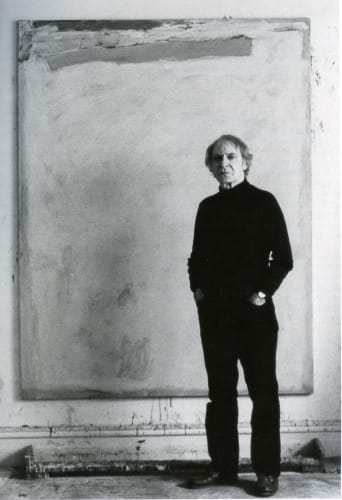Art was in Edward Dugmore’s blood, as the son of an early English photographer. His father worked in factories and was in the National Guard, but photography was his passion. From an early age, Dugmore would observe his father’s process, and began his own form of expression through drawing, watercolor and poetry, all before his teenage years. With enormous encouragement from his mother, Dugmore began his artistic education in his hometown, at the Hartford Art School. He then went on to study at the Kansas City Art Institute, under Thomas Hart Benton before serving in the Marine Corps during World War II.
After the war, Dugmore studied with Clyfford Still at the California School of Fine Art in San Francisco. The two became close friends, and Edward was deeply influenced by Still’s work. His final round of formal education was in Guadalajara, Mexico, where he earned his M.A. degree. Howard Wise Gallery in Cleveland, was the first to exhibit Dugmore’s work in 1960. Subsequently, two solo shows in New York in 1961 and 1963 kicked off his success, and he became a prominent figure in a diverse array of galleries and venues, including a long time relationship with the Stable Gallery, who also held solo shows for the likes of Andy Warhol and Robert Indiana early in their careers.His first exhibition at Stable was in 1953. Dugmore’s paintings are luminescent. The brooding landscapes evoke at once a primal natural topography, as well as being reminiscent of something distinctly human, and aging, like a peeling wall in a beloved childhood home. It is both spontaneous, and thoughtful, with deep considerations of color. Dugmore ground his own pigments and mixed his own paint for most of his career. Midway through his career, Dugmore received a Guggenheim Fellowship, in 1966, as well as grants from the National Endowment for the Arts in 1976 and 1985. He received an award from the American Academy and Institute of Arts and Letters in 1980, and towards the end of his life, in 1995, Dugmore was awarded the Pollock-Krasner Foundation's Lifetime Achievement Award as well as the Ingram Merrill Foundation Lifetime Achievement Award in 1992.
